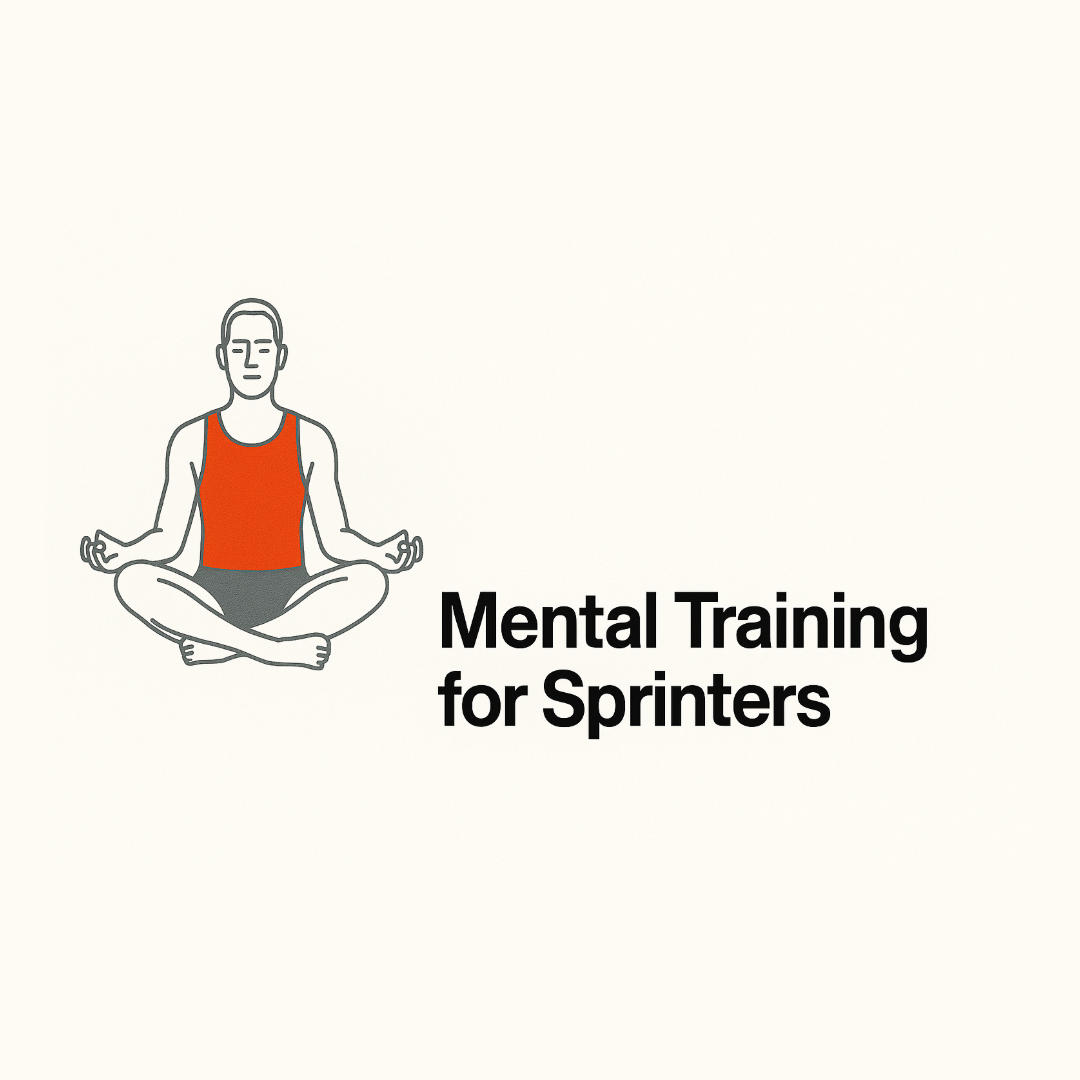
Mental Training for Sprinting & Explosive Performance
Unlock sprinting speed with proven mental training. Learn visualization, mindfulness, and sports psychology techniques to boost explosive performance.

For decades, sprint training followed a simple rule: start the year by “building a base.” Coaches sent sprinters out for long, steady runs, convinced that aerobic endurance was the foundation for explosive speed.
Fast forward to today, and the picture looks very different. Advances in biomechanics and sports science have revealed that the qualities that make sprinters fast—acceleration, maximum velocity, and efficient force application—don’t come from jogging laps. They come from precise, high-intensity training that mirrors the demands of sprinting itself.

The traditional sprint training model grew out of distance running philosophies and early periodization systems. Its key features included:
The logic seemed sound at the time: develop general fitness first, then sharpen with speed. But modern research suggests this approach misunderstood the unique demands of sprinting. Unlike distance events, sprint performance is determined primarily by neuromuscular power, acceleration ability, and maximum velocity capacity—qualities that are not developed by long, slow running.
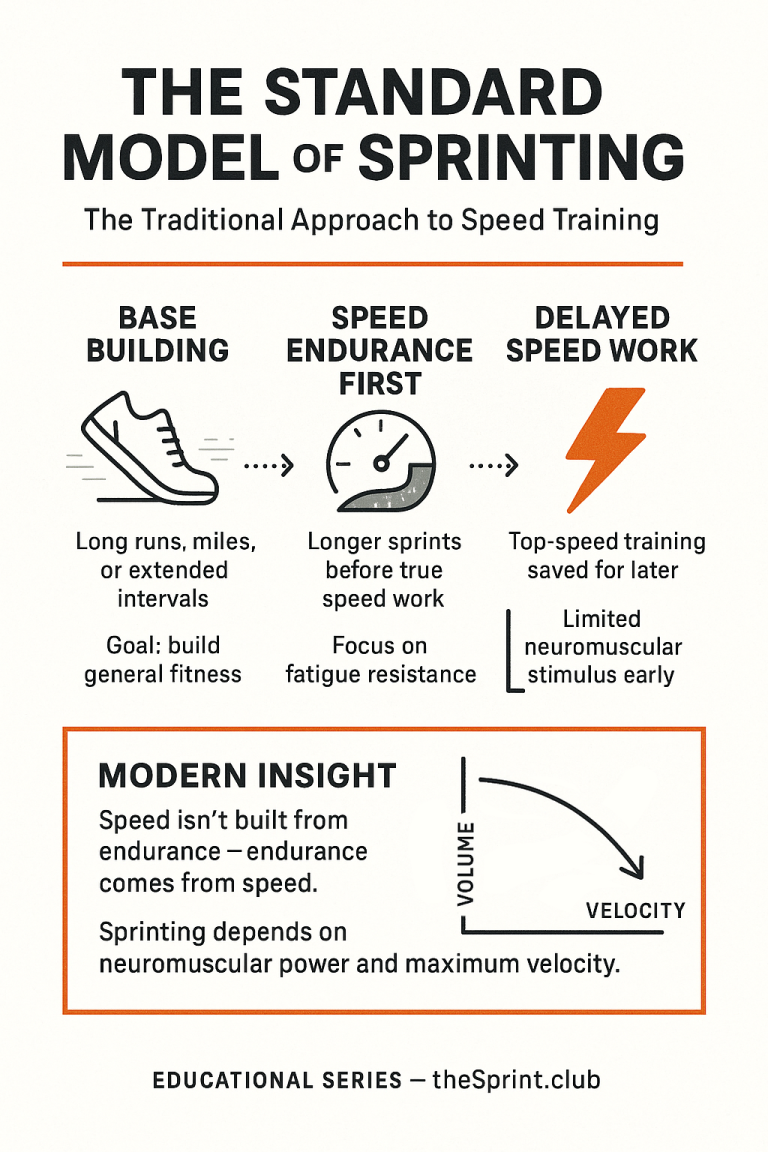

Over the last 15 years, biomechanics research has transformed sprint training. With tools like high-speed video, force plates, and motion capture, scientists have studied sprinting at a level of precision unimaginable in the 1970s or 1980s.
Key findings include:
These insights flipped the script: instead of endurance building speed, speed builds endurance.

Modern sprint theory centers on one principle: maximum velocity capacity is king.
Here’s why:
In short: speed endurance is built on speed, not the other way around.
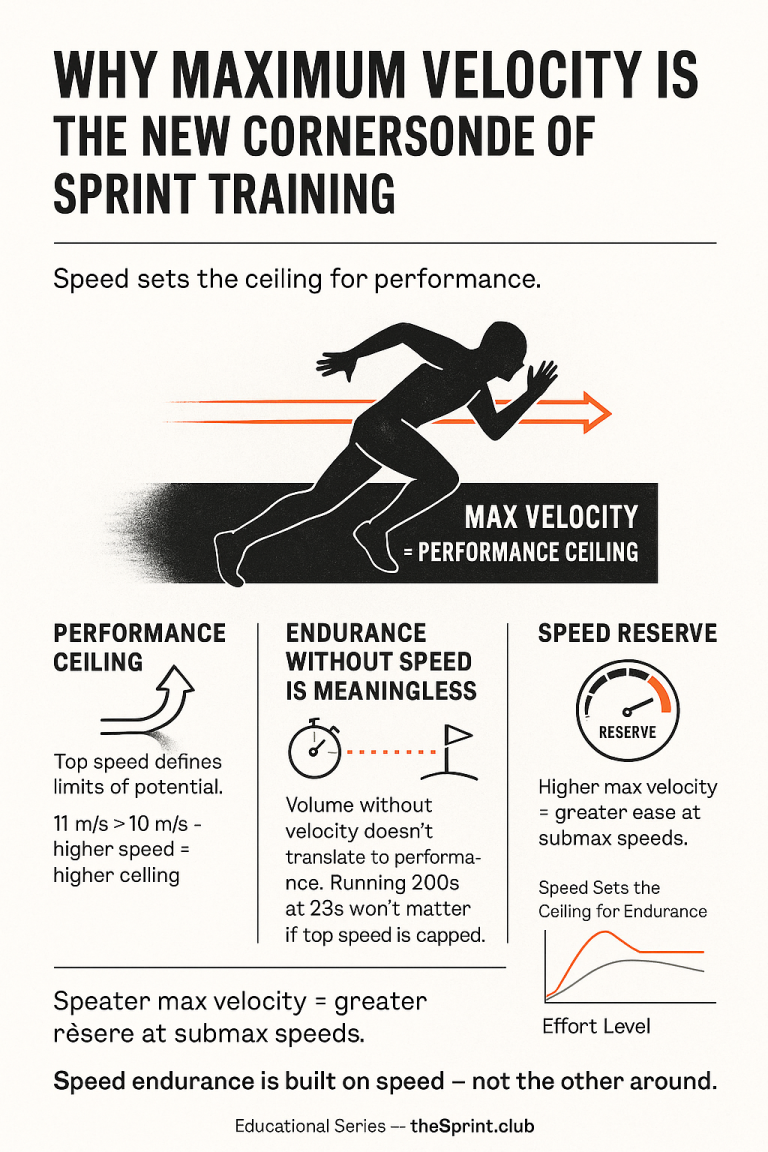
The new training hierarchy looks like this:
This sequencing reflects how the body adapts: you can’t endure what you haven’t first achieved. Coaches who skip ahead to endurance before establishing velocity are essentially asking athletes to “endure being slow.”
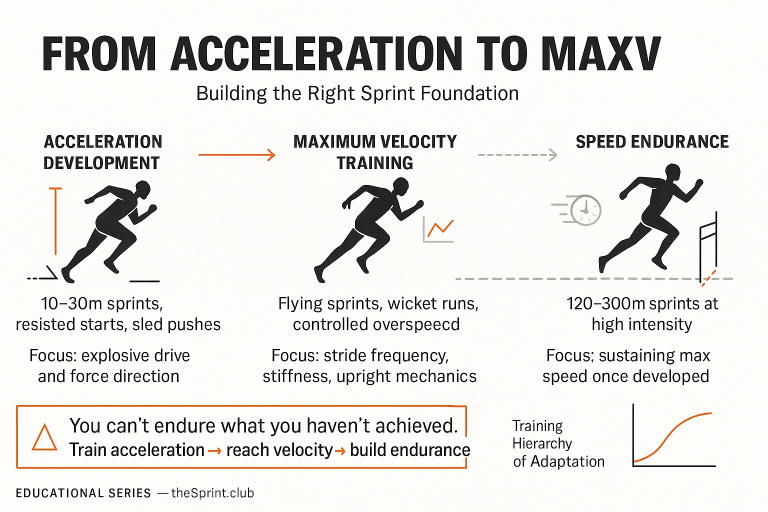


That’s not to say endurance has no role—it just belongs later in the process.
The key is that endurance is layered onto speed, not used to create it. Coaches who follow this sequence see athletes maintain velocity deeper into races without losing explosiveness.
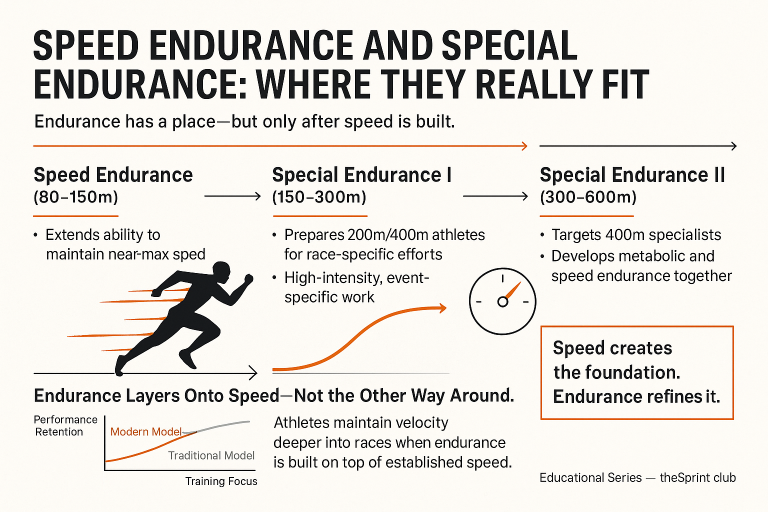
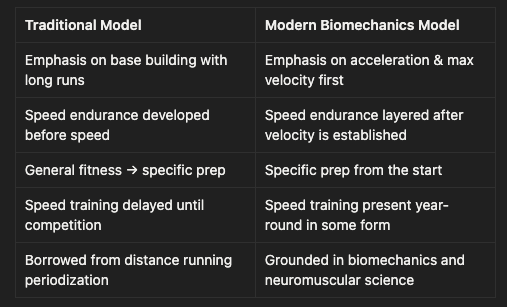
Ground Contact Time
Elite sprinters minimize ground contact. A difference of 0.01 seconds per step adds up to meters gained over 100m.
Force Direction
Stride Length vs Frequency
Contrary to old beliefs, it’s not about consciously “lengthening” stride. Elite sprinters achieve longer strides naturally through higher force and velocity.
Elastic Strength & Stiffness
Tendon stiffness and elastic energy return are critical. Plyometrics and high-speed sprinting build these qualities.
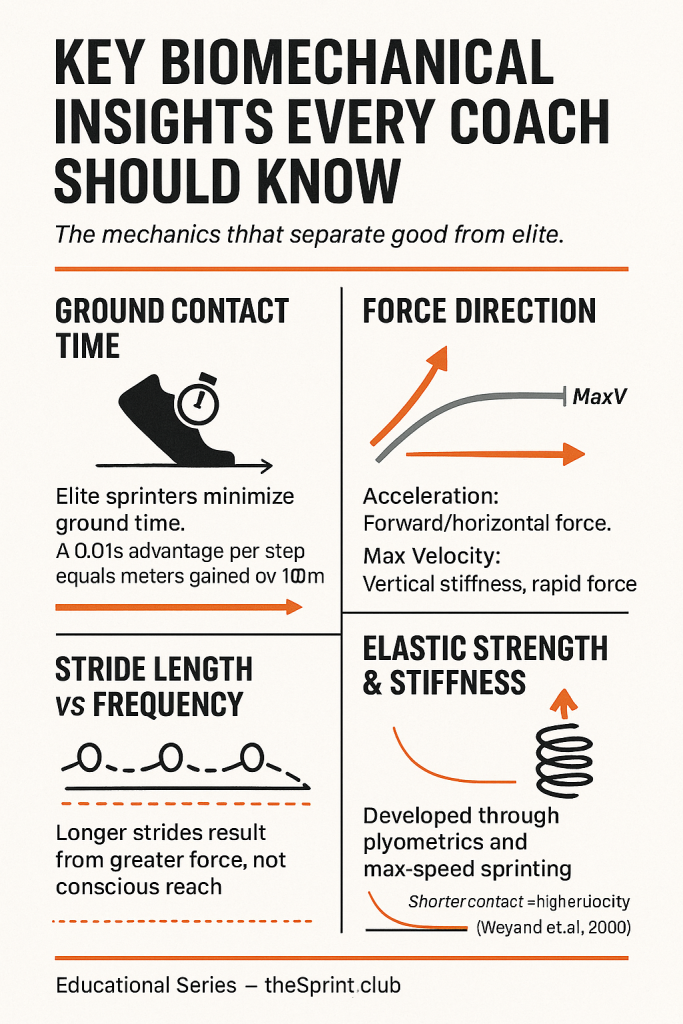

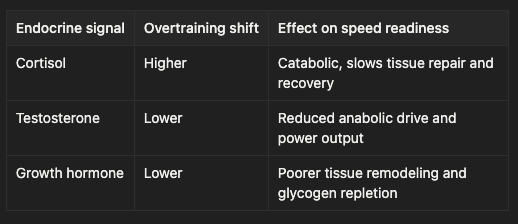

For coaches, the challenge is turning science into training. Here are actionable applications:
Q: Do sprinters really need a “base”?
A: They need a base of sprint-specific strength and mechanics, not miles of aerobic running.
Q: Can speed endurance replace max velocity training?
A: No. Without max velocity, speed endurance just extends subpar speeds.
Q: Should young sprinters run cross country in off-season?
A: Generally no. Sprint skills are highly neural and biomechanical—distance training develops conflicting adaptations.
Sprinting is one of the purest expressions of human performance, but for too long, training methods were borrowed from endurance sports. Now, thanks to biomechanics, we understand that speed—not endurance—is the foundation of sprinting success.
For coaches, the message is clear:
The future belongs to athletes and coaches who embrace the science. The stopwatch doesn’t lie—and neither does biomechanics.


Unlock sprinting speed with proven mental training. Learn visualization, mindfulness, and sports psychology techniques to boost explosive performance.

Should sprinters focus on work capacity or speed quality? Discover the truth about GPP vs SPP and the real goal of sprint training.
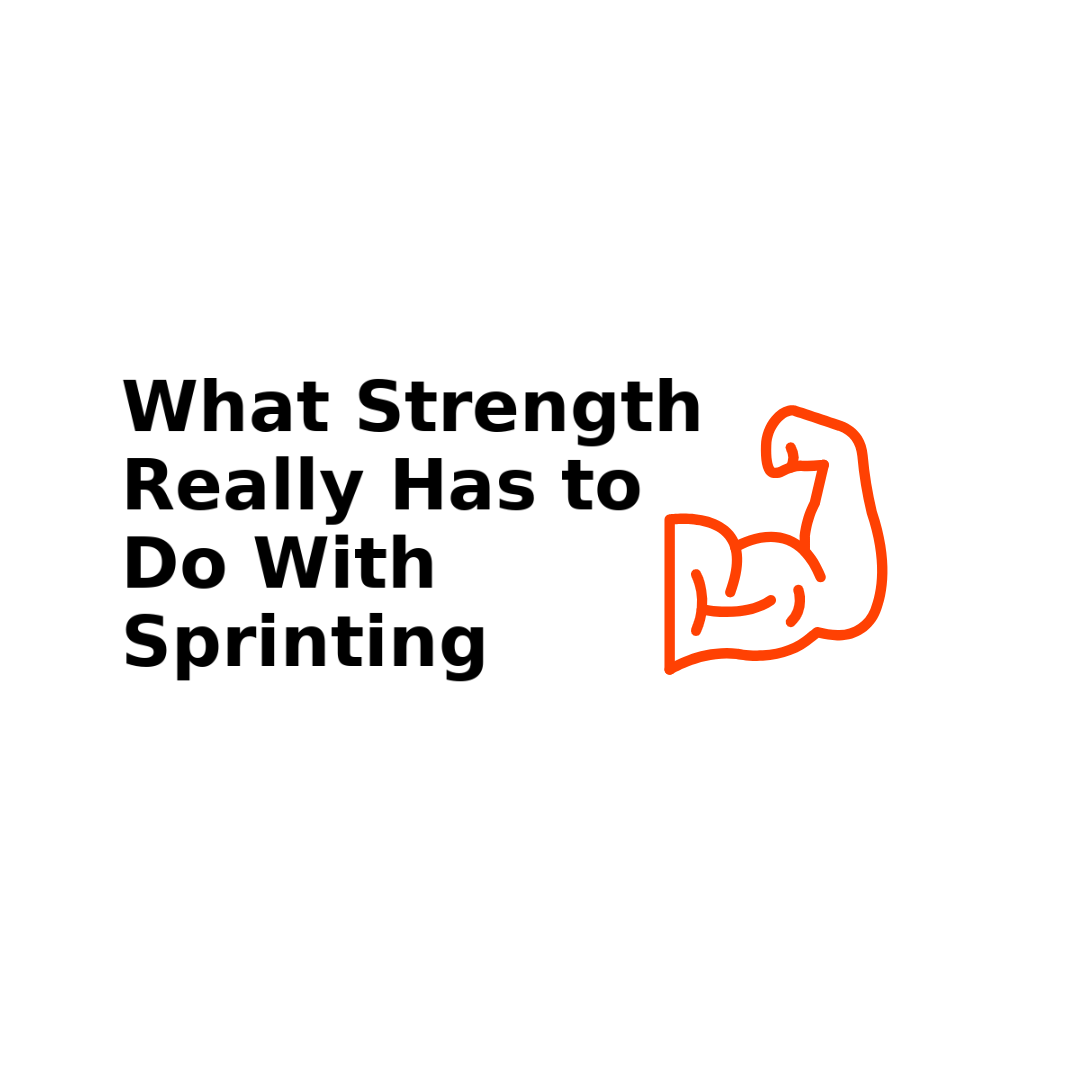
Strength doesn’t guarantee sprint speed but eccentric strength does. Learn why absorbing force matters more than producing it, and how to train it to run faster.

